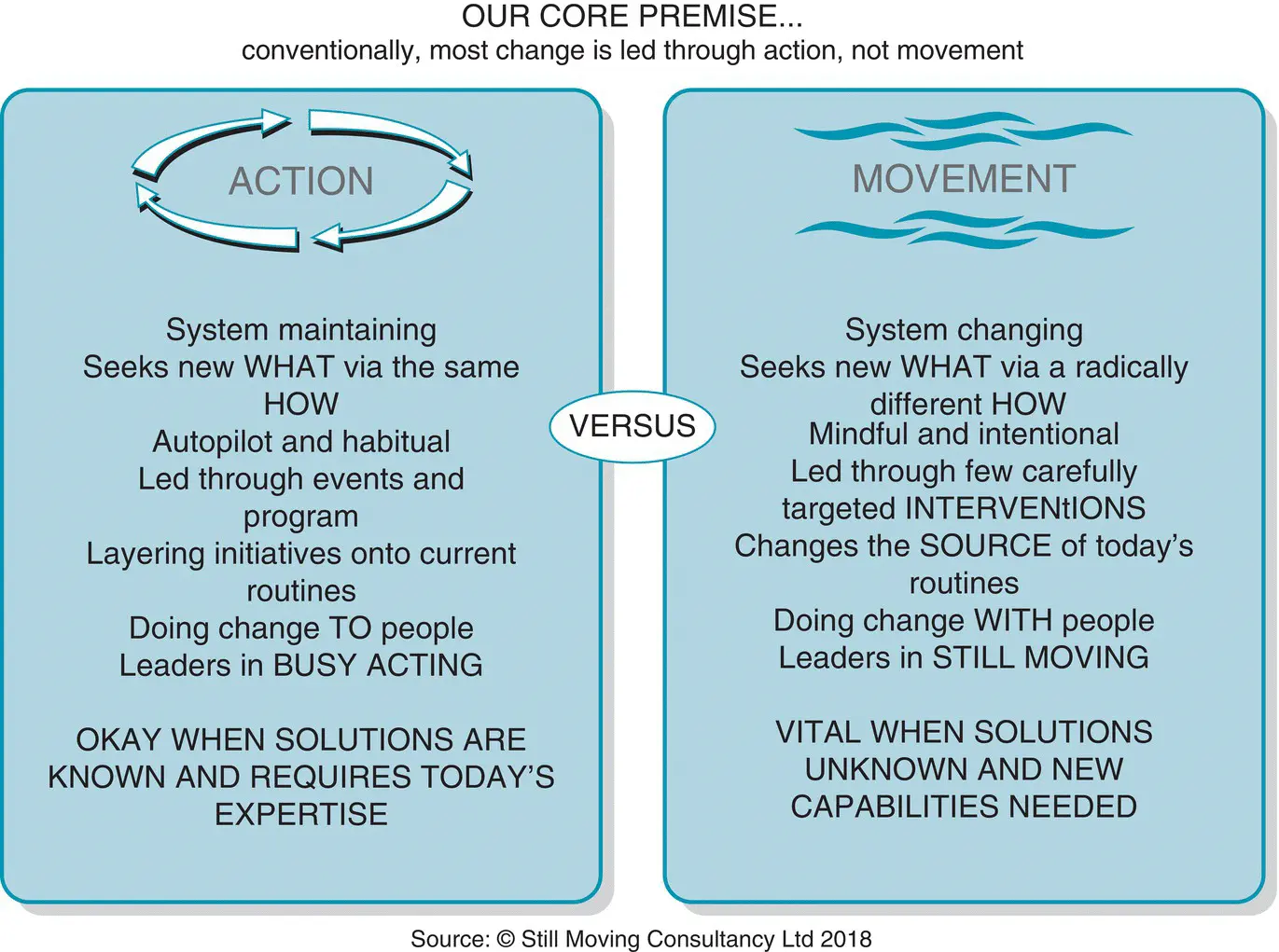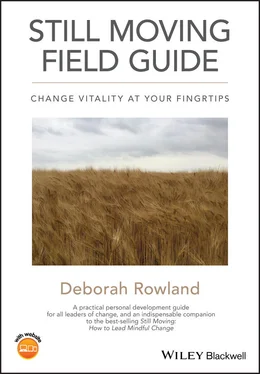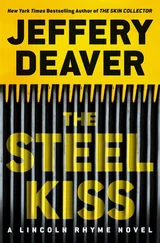The Field Guide was originally written to support a growing band of change practitioners who were drawn to the Still Moving philosophy, research, and set of frameworks, which they see as a holistic, fresh take on how to lead change well in today's world. I cannot recall how many approaches I received in the 3 years subsequent to the publication of Still Moving that went along the lines of “I have read your book Still Moving and absolutely loved it. How can I learn more about these capacities and how to deploy them in practice? I want to go further and deeper!”
One way in which we have responded to this pull is to run Still Moving Change Practitioner Programmes—an in‐depth, 4‐day immersion experience into the Still Moving way of “doing” change, followed by application coaching and supervision. The Field Guide developed as an essential reference manual to the content taught in this program, and I'd like to acknowledge here the now‐65 (and climbing) alumni practitioners whose take‐up of the content of the Field Guide gave me the inspiration to publish it for the wider world. Some of their names and messages appear within the book as “Tales From the Field.”
Thank you to all for helping me turn Still Moving from a book about change into a movement to lead change differently—including the practitioners and change leaders who are to come.
Finally, a massive thanks to perhaps my biggest fan, my dad, Ron Rowland. He is always asking me, “What's your next book going to be?”—well, here it is!
1 1I call them “Still Moving colleagues” as, subsequent to the publication of Still Moving: How to Lead Mindful Change, I discovered from readers and audiences the remarkably intriguing resonance of those two words. So, I renamed my change consultancy to Still Moving.
A Few Words About the Front Cover
We had just moved here. I was walking the dog in the afternoon of a cloudy day. I turned the corner and the movement caught me. The wind swayed the barley and chased the clouds. And I felt how real this was, this field, these clouds, this wind. Here. Now.
Anjet van Linge is an artist and a founding member of the Still Moving tribe of consultants. She is also the founder, with her husband Marc, of Working Silence, a retreat house in the North of the Netherlands where the land is empty, the skies are big, and the wind is always present.
The front cover picture of this Field Guide was created by Anjet van Linge
The images in this Field Guide have been created by Julian Burton, Creative Consultant www.delta7.com
About the Companion Website
The companion website for this book is at
www.wiley.com/go/stillmovingfieldguide 
The website includes:
Website links
Figure PDFs
Stillness is what creates love,
Movement is what creates life,
To be still,
Yet still moving—
That is everything!
Source: Do Hyun Choe, Japanese Master .
Welcome to the Still Moving Field Guide .
Leading change in today's world is a complex, ongoing, and demanding task—a core competence now of any leader. Congratulations for taking the time and attention to see how effective you are at this. Our goal at Still Moving is to enable leaders to lead change in more effortless ways. And, guess what: it takes effort to become more effortless!
We hope this Field Guide can accompany you in that task. Its purpose is to provide a detailed explanation of all the elements that we have found are highly related to leading big complex change well, elements that in combination we call “Change Vitality.” In addition to describing these elements, the Field Guide is designed to help you develop your practice in leading change well—a bit like a personal development manual.
It can be read alongside the book written by one of our team, Deborah Rowland, Still Moving: How to Lead Mindful Change (Wiley, 2017). This original Still Moving book takes you on a journey to understand how we created the Still Moving leading change frameworks, drawing on Deborah's experience, her life journey, and our pioneering research in the field, and is richly illustrated with stories of leaders who led change well.
This subsequent Field Guide is about, and for, you. Dip in and out of it where you wish, noticing where your attention is directed to. It contains guidance for personal development and also ideas for how to cultivate greater change capacity in your team and the wider system.
And keep in mind as you do so that we have found that the quality of your inner state, your being, how you “are” as a leader determines the quality of your doing, the actions you take as a leader. The stillness, awareness, and spaciousness of your inner world—your command of your mental and emotional states—really do control how effectively you can create movement in the world around you.
So, as you use this Field Guide , pay attention to your inner state, notice how you respond to what is presented—your degree of openness and curiosity, your feelings and emotions, any tendency to discount or self‐judge. Explore what these observations are telling you, before you leap into taking action!
Enjoy this journey of leadership exploration.
The Still Moving team
March 2020
1 Rowland, D. A. (2017). Still Moving: How to Lead Mindful Change. Wiley‐Blackwell.
Part 1 Understanding Change Vitality
Grounded in empirical research, Change Vitality is a framework we use to set out the fundamental capacities that are key to the successful leadership of large complex change.
Today's world calls for a different way to lead change. Gone are the days when change was an episode, a one‐off event, a “thing to be managed.” Nowadays, we live in a world that swirls in ongoing change. Rapid technology innovation is also causing major disruption and the need to lead from a new, emerging future. We also now live in a more joined‐up and interconnected world, where the pace of change has exponentially increased, and it is harder to control or unilaterally dictate to others what to do.
All of this calls for an approach to the leadership of change that we call creating movement , rather than staying in busy action . Change that is about movement takes you to new, unprecedented places. Change that is about busy action, while creating heat and noise, might just keep you stuck in today's routines. It's paradoxical, as creating true movement might mean slowing down the pace a little and looking to the source of today's routines, how things get done.
So, the core insight underpinning Change Vitality is that successful change demands leaders to not just launch actions and initiatives—getting busy—but instead cultivate deep awareness of, and movement in, their own and hence their organization's routines. We define change as “the disturbance of repeating patterns.” If leaders do not pay attention to a new “how” (way of operating), they will get the same “what” (results)!

What Makes Up Change Vitality?
Читать дальше














